 4
4

Examining the pyramid with the mions
 19. 04. 2024
19. 04. 2024



 4
4

 19. 04. 2024
19. 04. 2024

 1
1

 17. 04. 2024
17. 04. 2024
 6
6

 16. 04. 2024
16. 04. 2024
 21. 03. 2018
21. 03. 2018

The talisman protects against discomfort, is a life guide and helps in decision-making, it even develops the talents and spiritual abilities of its wearer. Everyone has a talisman, for some it can be a teddy bear or a glass ball, a diamond pendant, for example a glass one, a shark tooth or an old coin. An ordinary clamp can also be an ordinary clamp, if something positive is connected with it.
At all times, they have been and are, with the nations of our world, very popular objects in which the magical power lies, bringing happiness, health and success to man. These objects are called differently, but the most famous are amulets, talismans and scapulars, or "oberegy".
Talismans appeared in the distant past, along with the first knowledge and religions of the people. The belief that a fang hung on a string can save a hunter from death, and a stone with a hole protects the hearth, has existed for centuries, perhaps millennia. Such amulets became ornaments and jewelry, worn on the neck, wrists and fingers. The word talisman itself comes from Arabic.
In the ancient Greeks, similar objects with certain images were called telesmas, filaktérion and stoichima, in the Romans the amulet (from the Latin amuletum, the vessel of reconciliation and enlightenment Aemula). The invention of the talisman is attributed to one of the giants living before the flood, who was able to "change the path of the constellation":
There are mentions that the first Egyptian pharaoh Narmer had two stone tablets made with different images, the magical power of which held back robbers who could not move. The Arab chronicler Abenef writes that Ham, Noah's son, introduced the use of talismans and spread it among the people.
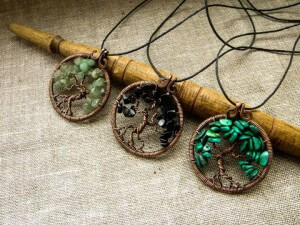 Today, the word talisman refers to magically charged objects, with the ability to attract success and happiness to life. A talisman can be any object of natural or artificial origin which, when made or "set up", has been equipped with a set of characteristics which help its owner to achieve his goal.
Today, the word talisman refers to magically charged objects, with the ability to attract success and happiness to life. A talisman can be any object of natural or artificial origin which, when made or "set up", has been equipped with a set of characteristics which help its owner to achieve his goal.
Unlike a talisman, the amulet is a thing that protects its wearer from negative influences. And "obereg", an ancient Slavic expression, is a protector. Vladimir Dala says that the oberegs are "spellings, spells, words, and ceremonies that protect themselves from harm by breaking or possibly allowing negative spells to take place."
Talismans can be specially made, but they can also be objects that become or come into existence under certain circumstances.
They are of natural and artificial origin. Natural minerals and plants of various kinds are commonly used for natural talismans, as well as scrolls of paper with magical texts. However, making artificial talisman is not easy at all.
There are lots of different energy information programs that are inserted into the talisman.
It can be designed for a particular person, for members of one family or for anyone who will be his owner. A program embedded in a talisman can protect you from illness, mischief, injury, infertility or even bankruptcy.
The talisman absorbs negative influences from the surroundings of its owner, thus minimizing the risk of their harmful effects. A talisman is considered to be more effective if it is closely focused on a specific task, such as injury defense.
Natural amulets and talismans are often common or precious stones, with a certain strength attributed to each species. Some of them are very widespread. The magical power of any talisman depends in many ways on alignment with its wearer. In order not to break this bond, talismans and amulets should not be lent to anyone else, not even a loved one, because they lose their power.
One of the simplest and oldest talismans was knots. Norwegians and Finns believe that with their help it is possible to control the wind. He also enjoys considerable seriousness in Germany and Austria. The Chinese are the unique masters in their binding. Special bells (wind music), lamps, pagodas and other amulets hang on intricate ties made of red threads, interwoven with decorative knots. He believes that the red thread, provided with knots, increases the force of action of the suspended object.
Old Russians used special nodes that transmitted magical power, protected from misfortune and healed 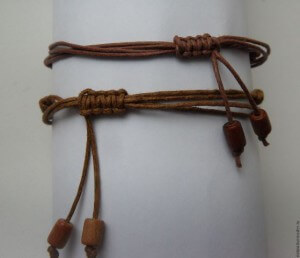 sick. Above them, the healing herbs, the spells of spells, and various other objects were sprawled.
sick. Above them, the healing herbs, the spells of spells, and various other objects were sprawled.
They wore them on their chests, hung on strings and strings, or on chains. And it was from these knots that "ladans" (pouches) were later created, into which, already in Christian times, they inserted temple incense. Ladanky were talismans for good luck and protected against enchantment and the use of weapons.
Minerals have special strength and energy, absorbing energy from the depths of the earth and the elements - fire, water, air and earth. The stones radiate waves of different frequencies and transmit the force they have accumulated over the centuries. There is a continuous exchange of energies between the stone and the environment, including the person holding it in his hand or carrying it on his body. The power of the mineral heals the body and strengthens the spirit, helps to solve situations and purifies intentions.
Stones are the most effective talismans. There are entire encyclopedias that describe the nature and properties of each mineral. Many of them affect the spiritual side of man, others help to achieve the goal. Jasper ensures victory, gives us toughness and does not let us get stuck in place when reaching the goal. The Egyptians considered jasper to be the stone of the goddess Isis, and the Chinese considered it a symbol of the mystery of being.
Sapphire is a talisman of wise men, giving them a sense of purpose and a sense of justice, protecting against envy and betrayal. Chrysopras is designed for enterprising, brings success and endurance, attracts wealth. Garnet gives power over people, helps to find the right path, and therefore is a pilgrim's talisman.
A lot of stones are worn by people so that they can attract success and happiness into their lives. Rubin is a stone of joy and grief. The Indians believe it brings love, "it gives the power of the lion and the wisdom of the snake, protects against evil, heals the heart and the brain, and removes dreadful dreams."
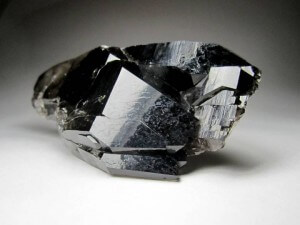 But the "happiest" stone is turquoise. It is especially prized in Asia and America, where it is considered the strongest amulet. Indians hang dream catchers in their homes, a spider web with a turquoise in the middle and bird feathers on the sides that hold back bad dreams and release good ones.
But the "happiest" stone is turquoise. It is especially prized in Asia and America, where it is considered the strongest amulet. Indians hang dream catchers in their homes, a spider web with a turquoise in the middle and bird feathers on the sides that hold back bad dreams and release good ones.
At all times, the most precious stone was diamond, the only mineral that can decompose light into individual colors of the spectrum. And this ability of his ancestors impressed him so much that they began to see him as protection against everything. Amber is a stone of the sun, which was also highly valued by the "old". He adorned the crown of Pharaoh Tutankhamun, the Romans used it to strengthen spirituality and physical abilities. In China and Japan, they believe that amber is hardened drops of dragon's blood, and they still consider it a sacred stone of emperors.
The emerald was popular in ancient Greece, where it was dedicated to Venus. In Arab countries, they believe it can protect against evil spirits, epidemics and snake bites. And for the Slavs, it was a stone of hope.
Using stones, it is possible to protect themselves from negative magical influences, but on the contrary, to create them, as well as becoming a mage and seeing the future. The best helper for predictions is the mountain crystal used by wizards and sorcerers.
He relieves ordinary mortals of hallucinations and melancholy. The Indians consider it a dragon stone that causes solar and lunar eclipses. In Japan, black agate wins over the forces of evil. And Europeans believe that this stone gives strength and fearlessness.
Morion, black quartz, is used to communicate with the souls of ancestors. Smoky topaz is a witch's stone that enhances their magical abilities. Only carnelian can protect us from that. Carnelian suppresses and overcomes black magic and helps protect secrets. He is also a talisman of loyalty and love.
The Greeks used it to make cameos depicting Eros and Psyche. The stone helps to bring "souls" closer together, as well as to recognize true love from falling in love - when you look at a loved one with a carnelian in hand, and if the love is true, the stone begins to shine.
In terms of character and morals, there are pearls. For a person with bad inclinations and intentions, the pearl becomes dull and helps the good to fulfill longing wishes. The Chinese believe that every dragon has its own pearl, which it loves and protects like an eye in its head. In the Russian tradition, it is customary to wear more pearls, then they succeed, and the individual pearls evoke sadness and tears.
Ordinary pebbles, which had a hole created in a natural way, were highly valued. In Europe, "leaky" 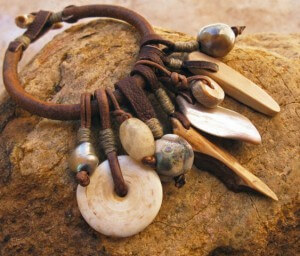 Pebbles are considered magical and help against witches. These were powerful amulets for the Celts. In Russia, stones with holes are called "chicken gods" because they were previously hung in chicken coops to protect them from witches.
Pebbles are considered magical and help against witches. These were powerful amulets for the Celts. In Russia, stones with holes are called "chicken gods" because they were previously hung in chicken coops to protect them from witches.
The key is no less powerful amulet. The tradition of using the key as an amulet came to us from the Etruscans. The hanging key on the neck is the key to human destiny, a talisman that shows us the right path and helps to realize our destiny. The strongest talisman is an antique key from a chest or chest of drawers.
Horseshoe is a talisman, proven by centuries, a symbol of success and a means of protection. Horseshoes are a success because they belonged to a horse - an ancient magical animal, connected to the Sun and the Gods. It is important that the hatch is found by chance. Then, according to the rules, it is necessary to nail the nail on the inside of the door of the house.
Since the advent of money, coins have been one of the strongest means of protection. The first to start decorating with them were the gypsies. The tinkling of coins banishes impure forces. In our time, however, coins are a symbol of wealth. Especially popular are Chinese coins with a square hole. They are hung on a red thread, secured with knots, and worn on the wrist or in a purse.
Bells and drums of various kinds protect against witches, because they are afraid of noise. For the Etruscans, ancient Greeks, and Romans, the children wore chains around their necks with tiny scissors, stairs, saws, axes, or pliers. In Sierra Leone, children had drums on their ankles to protect themselves from being enchanted. In China, they were embroidered on children's clothes.
In the East there is the art of feng shui, the philosophy of the talisman, transformed into the principle of life. Many rules of this old knowledge are based on the use of pictures of magical animals or objects.
Egypt still uses amulets from the time of the pharaohs, as well as ancient Coptic symbols. The lotus carries longevity and health, scarab success on the road. The "Isida's Knot" is an amulet for women that maintains happiness in marriage. The "palm of Fatima" protects against bewitching and harm.
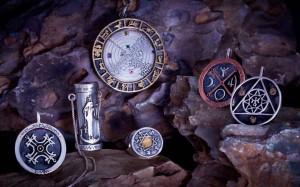 The most popular Arabic talisman is the round depiction of the eye. This amulet is against swearing. Because the people of the Middle East are mostly brown-eyed, they consider the blue eye to be bad, just as the Russians fear black eyes.
The most popular Arabic talisman is the round depiction of the eye. This amulet is against swearing. Because the people of the Middle East are mostly brown-eyed, they consider the blue eye to be bad, just as the Russians fear black eyes.
Whether it's a talisman anymore, you need to believe him, then give you everything you expect from him - happiness, health, wealth and longevity. Incorrectly selected or stolen talisman may create the opposite and complicate your life. 12